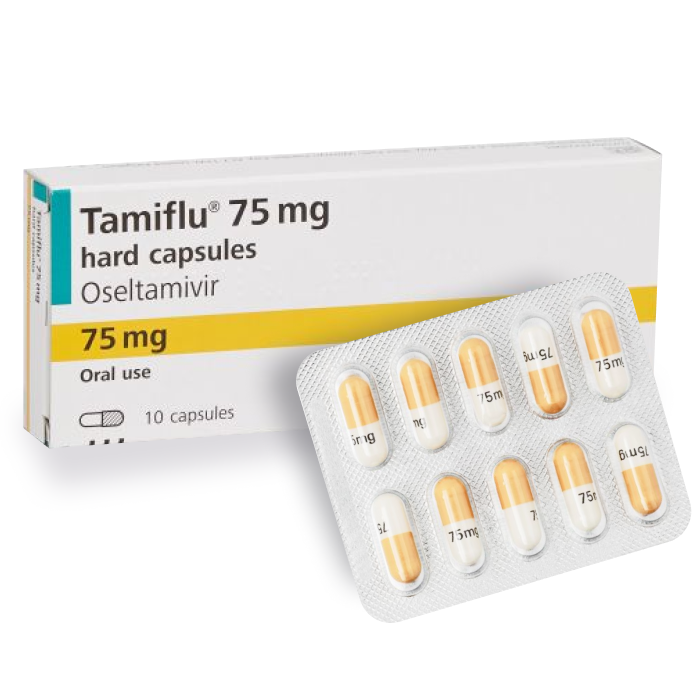Tamiflu (Oseltamivir) 75mg Capsules over the Counter

What Is Oseltamivir Phosphate?
Tamiflu prevents and treats influenza (the "flu"). It fights influenza A and B. Tamiflu can also treat H1N1 swine flu. This medicine can relieve flu symptoms in adults, children, and newborns older than 2 weeks, especially if used within 2 days of infection. After exposure to a sick family member or a flu outbreak, Tamiflu helps prevent influenza. Tamiflu cannot replace a flu shot.
Tamiflu uses oseltamivir phosphate. It's sold generically. Neuraminidase inhibitors include oseltamivir. It binds to flu virus replication protein neuraminidase. Oseltamivir shortens flu symptoms by blocking virus multiplication.
Gilead Sciences discovered tamiflu, which Hoffmann-La Roche manufactures. Oral suspension and capsules are available. There are three strengths of Tamiflu capsules: 30 mg, 45 mg, and 75 mg. Tamiflu 30 mg capsules have a light-yellow opaque body with a light-yellow cap while the 45 mg hard capsules have a grey-colored body with a grey opaque cap. The 75 mg capsules have a grey body with a yellow cap. The body of all three forms bears the word “Roche”, while the caps are imprinted with “30 mg”, “45 mg” and “75 mg” respectively. The powder for oral suspension has a concentration of 6 mg/mL when constituted with water as directed.
When treating flu, adults and children take Tamiflu 75 mg twice a day (morning and night) for five days. This medicine is given daily for prophylaxis. Taking it with meals or milk reduces stomach distress. Tamiflu capsules can also be opened and mixed with sweetened liquids to make intake easier for individuals unable to take capsules.
Oseltamivir Side Effects
Some of the most common adverse effects experienced after taking Tamiflu are:
- Nausea/vomiting
- Stomach pain
- Headache
- Diarrhea
Although rare, Tamiflu may cause serious side effects. Symptoms include:
- Hallucinations
- Sudden confusion
- Behavioral changes
- Tremors
Tamiflu allergies are rare but possible. Allergic reactions cause rashes, itching, throat, tongue, and face swelling, disorientation, and problems breathing or swallowing. Get medical attention for significant side effects or allergic reactions.
Package




Comments: